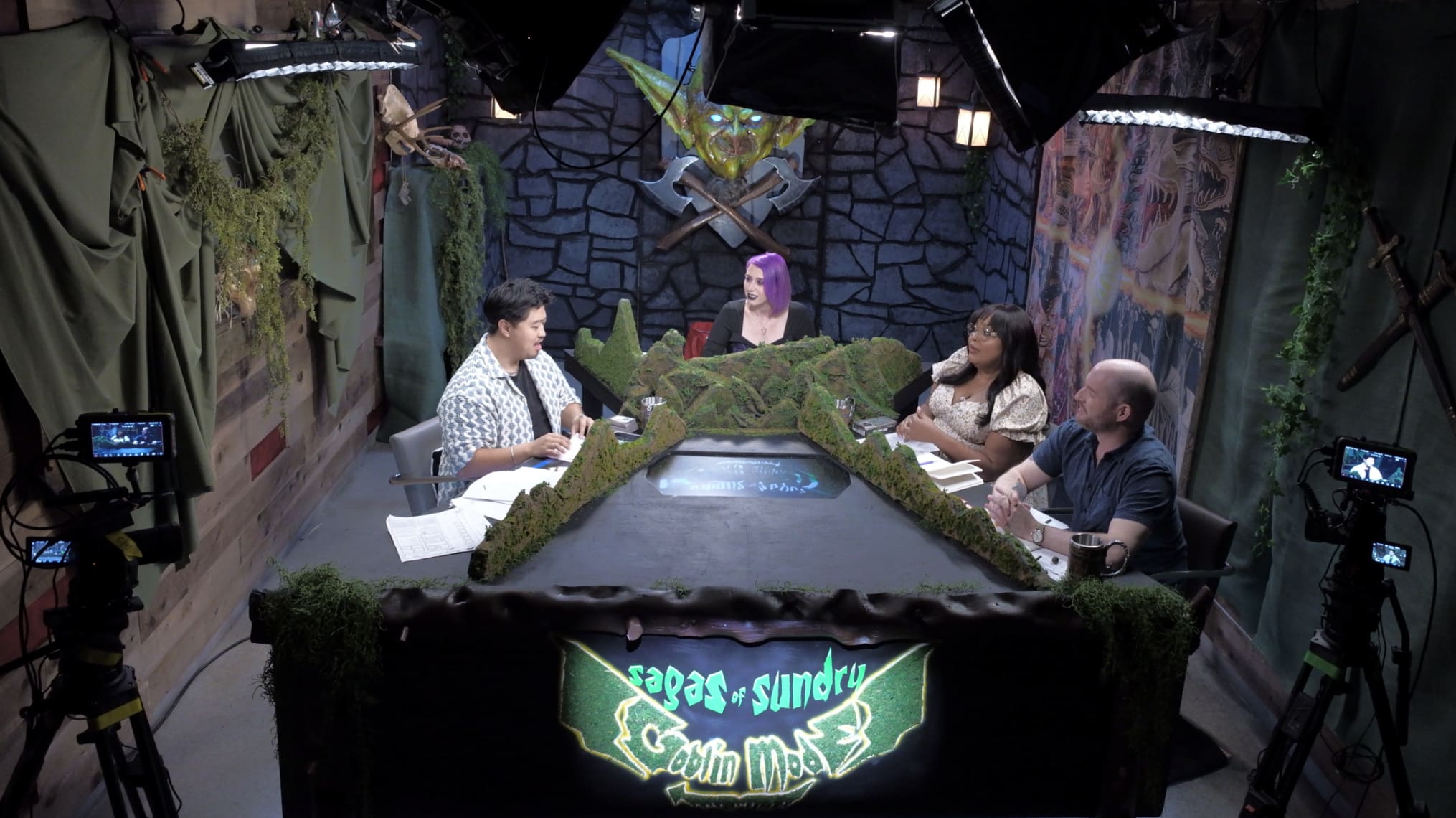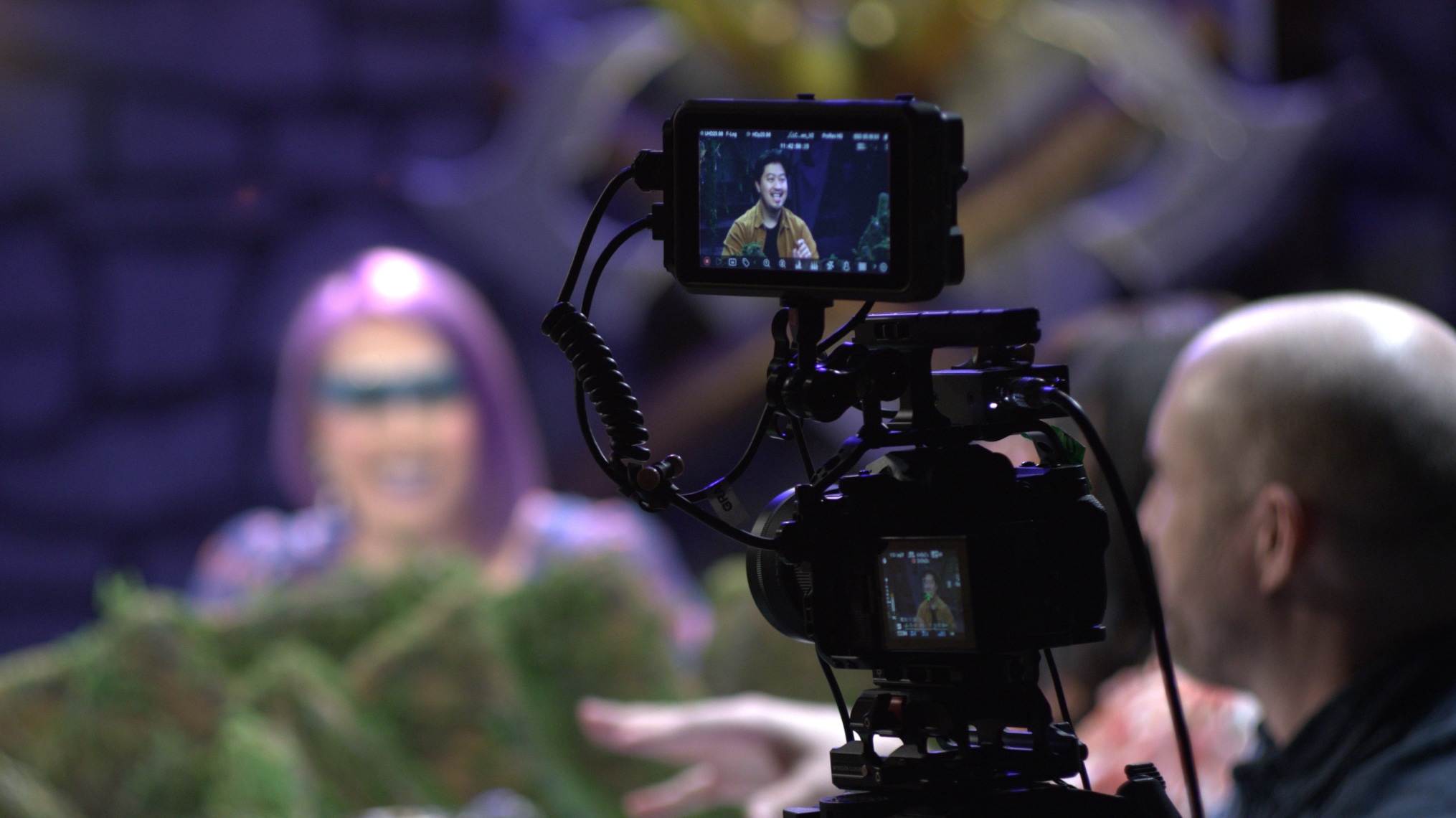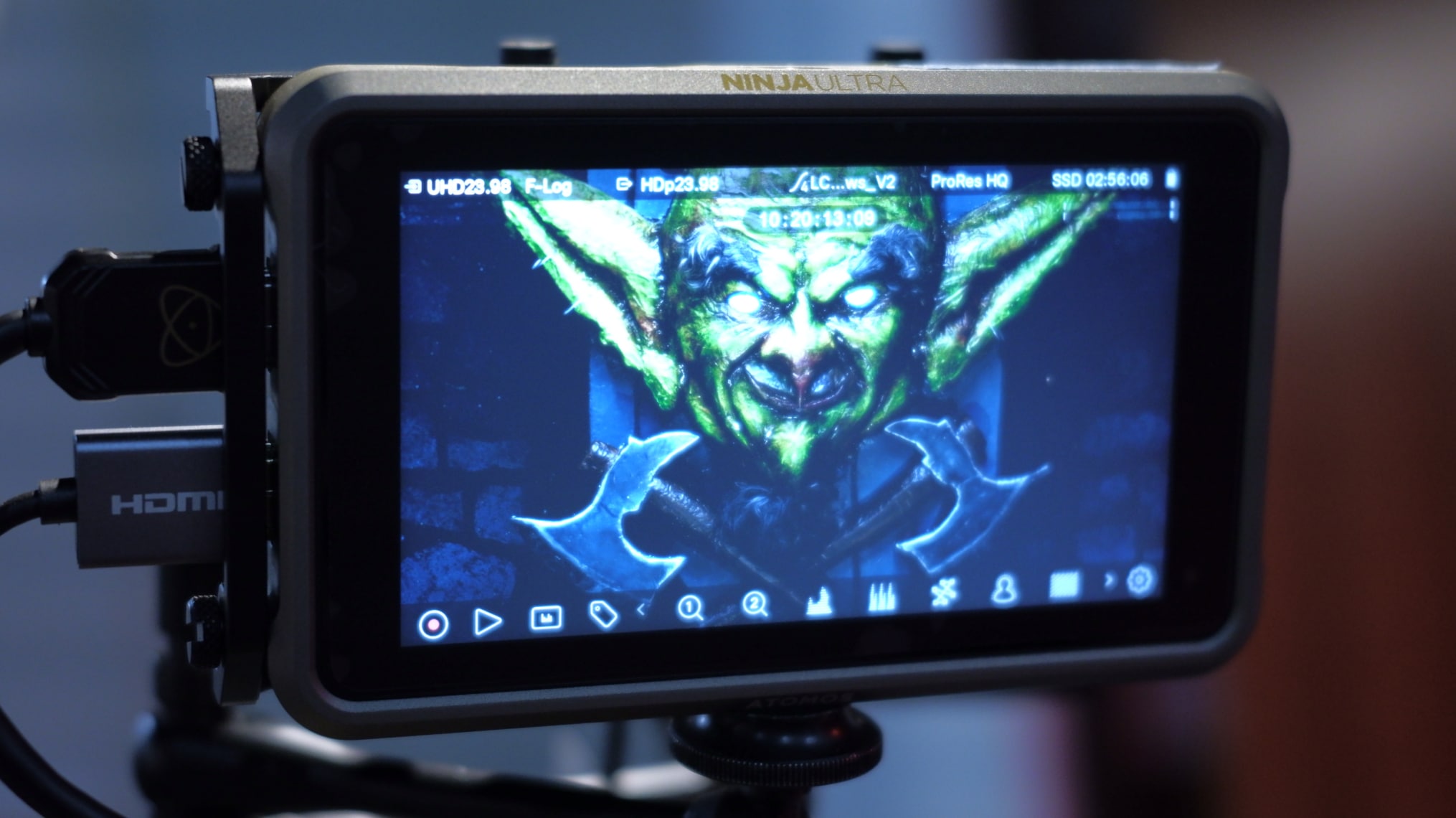Space-saving systems
Goblin Mode’s series Director, Graham Elhers Sheldon, leads the multi camera shoot, which spans across 20 episodes. “We treat this almost as if it’s a live show. We record for long periods and only pause very rarely,” Sheldon begins. Filmed against a dusky medieval-themed backdrop with the cast gathered around an ornate table, the show sees game master Amy Vorphal host the epic Dungeons and Dragons adventure alongside characters played by Danielle Radford, Dan Casey, and Jason Nguyen.
Recording takes place on a soundstage in Los Angeles. With very little space to manoeuvre during the shoot, Sheldon considered his equipment carefully, with the sole aim of creating a compact and agile set up. “Being an old-fashioned type of cinematographer, I’m used to the equipment being gigantic and having to carry it all around. Everything we use here is small and compact.”
Sheldon employs four FujiFilm X-H2S mirrorless cameras and one X-H2 camera with a selection of SIGMA X Mount lenses. After connecting the cameras to Atomos Ninja Ultra monitor-recorders, he disperses them to record from different angles. “We have cameras set up to capture the actors on either side of the table, whereas Amy, who sits at the centre, has a single camera pointing directly at her with a zoom lens attached,” he explains.
Another rig directed towards the table incorporates a Kessler Cineshooter+ motion control system and Dana Dolly to create a programmable roving wide shot. “This rig is one of my favourites,” Sheldon reveals. “If you’ve ever been a camera operator on a live show shooting for a long length of time, you know it’s not fun to continually go back and forth in parallax. This setup helps us avoid doing that.”
The addition of a compact external monitor-recorder has enabled Sheldon’s team to easily monitor footage without navigating a large and unwieldy rig. Weighing a mere 360 grams, the Ninja Ultra features a range of user-friendly built-in monitoring tools such as focus peaking, false colour and zoom controls. “Having a lightweight monitor enables us to easily operate the Kessler Cineshooter+,” he explains. “Thanks to the Ninja, the camera operator is able to monitor the footage clearly as the camera slides back and forth on the Dana Dolly automatically.”


